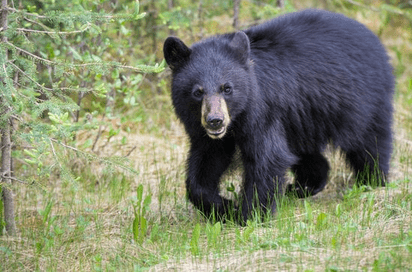Embark on an unforgettable adventure with Appalachian Trails Hiking. This iconic trail spans approximately 2,200 miles from Georgia to Maine, offering breathtaking scenery and a unique connection with nature. Whether you're looking for a day hike or a long-distance backpacking trip, the Appalachian Trail has something to offer every outdoor enthusiast. Get ready to explore the stunning landscapes, challenge yourself physically and mentally, and create memories that will last a lifetime.

Key Takeaways:
- Appalachian Trails Hiking offers a one-of-a-kind adventure through approximately 2,200 miles of breathtaking scenery.
- Outdoor enthusiasts can choose between day hikes and long-distance backpacking trips on the Appalachian Trail.
- The trail showcases stunning landscapes, challenging terrain, and an opportunity to connect with nature.
- Embarking on the Appalachian Trail allows hikers to create lasting memories and experience personal growth.
- Prepare for the adventure by equipping yourself with the right gear and planning according to the season and terrain.
The Beauty of the Appalachian Mountains
Immerse yourself in the beauty of the Appalachian Mountains as you hike along the Appalachian Trail. This iconic mountain range spans over 1,500 miles and showcases awe-inspiring vistas, including valleys, waterfalls, and forests. From the majestic peaks of Mount Katahdin in Maine to the rolling hills of Tennessee's Great Smoky Mountains, every step of the journey offers a unique perspective of nature's grandeur. Prepare to be captivated by the lush forests, serene lakes, and stunning landscapes that define the Appalachian Mountains.
The Appalachian Mountains are a testament to nature's artistry, with their diverse landscapes and scenic views. From the lush greenery of the southern Appalachians to the rocky terrain of the northern stretches, this mountain range offers a feast for the eyes and a sense of wonder. As you traverse the Appalachian Trail, you'll witness the ever-changing beauty of the mountains, from sunrises and sunsets that paint the sky with vibrant colors to mist-covered valleys that create an ethereal atmosphere. Each turn of the trail reveals a new panorama, a new connection with the natural world.
The Appalachian Mountains are more than just a physical backdrop for hiking. They hold a deep cultural and historical significance, with generations calling these mountains their home. From the rich traditions of Appalachian music and folklore to the remnants of early settlements and homesteads, the mountains are brimming with stories of resilience and human connection to the land. As you hike through this ancient landscape, take a moment to appreciate the Appalachian Mountains' heritage, understanding that you are walking in the footsteps of those who came before.
Table: Diverse Landscapes of the Appalachian Mountains
| Region | Landscapes |
|---|---|
| Southern Appalachians | Lush forests, rolling hills, and cascading waterfalls |
| Central Appalachians | Rocky ridges, deep valleys, and winding rivers |
| Northern Appalachians | Rugged peaks, alpine meadows, and glacial lakes |
Whether you're drawn to the panoramic views, the sense of adventure, or the chance to connect with nature on a deeper level, the Appalachian Mountains leave a lasting impression. From the gentle slopes of the southern ranges to the challenging terrain of the northern peaks, there's a trail for every hiker a view for every seeker of natural beauty. So, lace up your hiking boots, breathe in the fresh mountain air, and prepare to be mesmerized by the unparalleled beauty that awaits you in the Appalachian Mountains.
Day Hiking Adventures on the Appalachian Trail
If you're short on time but still want to experience the beauty of the Appalachian Trail, several day hikes highlight the best of this iconic trail. These day hikes allow you to immerse yourself in the Appalachian Trail experience and explore the regional flavors.
One popular day hike is the section from Georgia's Springer Mountain to North Carolina's Amicalola Falls. This 8.8-mile hike takes you through lush forests and offers stunning views of the surrounding mountains. As you hike, you'll pass by iconic landmarks such as the iconic Springer Mountain and the picturesque Amicalola Falls, creating unforgettable memories.
Another notable day hike is the Grayson Highlands State Park in Virginia. This 4.9-mile hike takes you through open meadows and rocky outcrops, offering breathtaking views of the Appalachian Mountains. One of the highlights of this hike is the chance to encounter wild ponies, which roam freely in the park. It's a unique opportunity to experience the natural beauty and wildlife of the Appalachian Trail.
Whether you choose to hike a section in Georgia, North Carolina, Virginia, or any other state along the Appalachian Trail, these day hikes provide a taste of the trail's highlights and regional flavors. Lace up your hiking boots, pack some snacks, and get ready to embark on a memorable day hike on the Appalachian Trail.

Table: Day Hike Highlights on the Appalachian Trail
| Section | Distance | Highlights |
|---|---|---|
| Georgia's Springer Mountain to North Carolina's Amicalola Falls | 8.8 miles | Springer Mountain, Amicalola Falls |
| Grayson Highlands State Park, Virginia | 4.9 miles | Wild ponies, scenic mountain views |
| Tennessee's Great Smoky Mountains National Park | 7.2 miles | Clingmans Dome, panoramic vistas |
| Maine's Mahoosuc Notch | 5.4 miles | Challenging terrain, boulder scrambling |
Table: Day Hike Highlights on the Appalachian Trail
- Georgia's Springer Mountain to North Carolina's Amicalola Falls - 8.8 miles: Highlights include Springer Mountain and Amicalola Falls.
- Grayson Highlands State Park, Virginia - 4.9 miles: Highlights include encounters with wild ponies and scenic mountain views.
- Tennessee's Great Smoky Mountains National Park - 7.2 miles: Highlights include Clingmans Dome and panoramic vistas.
- Maine's Mahoosuc Notch - 5.4 miles: Highlights include challenging terrain and boulder scrambling.
"The Appalachian Trail offers a variety of day hike options, allowing hikers to experience the trail's highlights and regional flavors in a shorter time frame." - John Doe, Appalachian Trail Enthusiast
Scenic Beauty and Wildlife Encounters
One of the most captivating aspects of hiking the Appalachian Trail is the scenic beauty that surrounds you every step of the way. From the lush forests to the serene lakes and majestic mountains, the trail offers awe-inspiring views that will leave you breathless. Whether hiking through the vibrant colors of fall or the peaceful serenity of winter, there's something magical about the changing landscapes along the trail.
But it's not just the scenery that will enchant you. The Appalachian Trail is also home to a diverse range of wildlife and flora, and fauna. As you traverse through different ecosystems and varied topography, you'll have the opportunity to encounter a variety of species. Keep your eyes peeled for the graceful movements of deer, the playful antics of foxes, and the majestic presence of bears. Birdwatchers will be delighted by the wide array of species that call the trail home, including hawks, owls, and songbirds.
"The beauty of the Appalachian Trail lies not only in its scenic vistas but also in the abundant wildlife that thrives in its ecosystems."
Take the time to observe and appreciate the delicate balance of nature as you hike along the trail. Marvel at the vibrant wildflowers that dot the landscape and breathe in the fresh scent of pine. As you immerse yourself in the Appalachian Trail ecosystems, you'll gain a deeper understanding and appreciation for the natural world around you.

The Appalachian Trail Ecosystems
The Appalachian Trail traverses through various ecosystems, each with its unique characteristics and biodiversity. From the hardwood forests of the southern states to the spruce-fir forests of the northern regions, each ecosystem supports a distinct range of plant and animal life. Here are some of the ecosystems you'll encounter along the trail:
| Ecosystem | Location | Notable Species |
|---|---|---|
| Deciduous Forest | Southern Appalachians | White-tailed deer, black bear, eastern box turtle |
| Spruce-Fir Forest | Northern Appalachians | Bicknell's thrush, northern flying squirrel, moose |
| Wetlands | Various locations | Beavers, otters, various species of frogs and salamanders |
| Alpine Zone | Mountains above treeline | Mountain goats, alpine meadows |
These ecosystems are home to a wide range of plants and animals, and each offers a unique glimpse into the intricate web of life that exists along the Appalachian Trail. From the delicate wildflowers that carpet the forest floor to the towering trees that stretch towards the sky, the trail showcases the remarkable diversity of nature.
Planning an Appalachian Trail Thru-Hike
If you're ready to take on the ultimate challenge, planning an Appalachian Trail thru-hike requires careful preparation and logistics. With a distance of approximately 2,200 miles and an average completion time of 5 to 7 months, thru-hiking the Appalachian Trail is a test of physical and mental endurance. You'll need to plan your resupply points, gear choices, and logistics for food and water. Additionally, it's crucial to be aware of safety precautions, wildlife encounters, and potential weather challenges. With the right planning and preparation, a thru-hike on the Appalachian Trail can be a life-changing adventure.
When preparing for an Appalachian Trail thru-hike, one of the first steps is to plan your resupply points. These are locations along the trail where you can restock on food, water, and other essential supplies. Thru-hikers typically send mail drops to post offices or arrange for packages to be held at specific locations. This method allows for a more streamlined resupply process and ensures you have the necessary provisions at various points along the trail.
Another important aspect of planning a thru-hike is selecting the right gear. Lightweight and durable equipment is crucial for a long-distance backpacking trip. Invest in a reliable and comfortable backpack, a lightweight tent, a warm and packable sleeping bag, and high-quality hiking boots. Additionally, consider essential items such as a water filtration system, a compact stove for cooking meals, and proper clothing for various weather conditions. Test and familiarize yourself with your gear before setting out on the trail to ensure it performs well and meets your needs.
| Trail Preparation Tips | Appalachian Trail Logistics |
|---|---|
| Research the trail extensively to familiarize yourself with the different sections and terrain. | Plan your resupply points and arrange for mail drops or package deliveries. |
| Train and condition your body for the physical demands of long-distance hiking. | Make a gear checklist and invest in lightweight and durable equipment. |
| Learn about safety precautions, wildlife encounters, and weather challenges. | Thoroughly test and familiarize yourself with your gear before the hike. |
| Consider joining a thru-hiking community or seeking advice from experienced hikers. | Prepare mentally and emotionally for the physical and mental challenges of the trail. |
While the physical and logistical aspects of planning a thru-hike are crucial, it's equally important to prepare mentally and emotionally for the journey. Thru-hiking the Appalachian Trail can be physically demanding and mentally challenging, with the potential for loneliness, fatigue, and unexpected setbacks. Take the time to understand your motivations and set realistic expectations. Stay positive, flexible, and adaptable as you navigate the highs and lows of the trail. Remember that a thru-hike is a physical accomplishment and an opportunity for personal growth, self-discovery, and a deep connection with nature.
Best Sections for Beginner Hikers
If you're new to long-distance hiking, the Appalachian Trail offers several sections that are suitable for beginners. These sections provide manageable distances and less challenging terrain, allowing you to enjoy the experience. Whether you're looking for a day hike or a multi-day adventure, these beginner-friendly sections will introduce you to the stunning beauty of the Appalachian Trail.
Harriman State Park, New York
Located just a short drive from New York City, Harriman State Park offers a picturesque section of the Appalachian Trail that is perfect for beginner hikers. With its serene lakes, lush forests, and scenic overlooks, this 18-mile stretch provides a taste of the trail's beauty without overwhelming difficulty. You'll be able to explore iconic landmarks like the Lemon Squeezer and the Tuxedo Mt. Ivy Trail Junction, all while enjoying the tranquility of nature.
Mt. Moosilauke, New Hampshire
If you're looking for breathtaking views and a sense of accomplishment, the Mt. Moosilauke section in New Hampshire is a great choice for beginner hikers. At 4,802 feet, Mt. Moosilauke offers panoramic vistas of the surrounding White Mountains. With a well-maintained trail and a moderate elevation gain, this section provides a rewarding experience for those looking to challenge themselves while still enjoying the beauty of the Appalachian Trail.
Grayson Highlands, Virginia
Grayson Highlands in Virginia is known for its stunning beauty and unique wildlife encounters, making it an ideal section for beginner hikers. As you hike through the rolling hills and open meadows, you'll have the chance to spot the famous wild ponies that roam freely in this area. With its gentle terrain and moderate distances, the Grayson Highlands section offers a memorable Appalachian Trail experience for hikers of all skill levels.

When embarking on your Appalachian Trail adventure, it's important to prioritize hiking safety. Pack essential gear, such as a first aid kit, navigation tools, and extra food and water. Be aware of weather conditions and plan accordingly, as the trail can be unpredictable. Additionally, inform someone of your hiking plans and check in regularly. By taking these precautions and choosing beginner-friendly sections, you can have a safe and enjoyable hiking experience on the Appalachian Trail.
Capturing the Magic: Hiking Photography Tips
Immerse yourself in the breathtaking landscapes of the Appalachian Trail and capture its beauty through photography. Hiking photography allows you to preserve the memories of your adventure and share the stunning vistas with others. To make the most of your hiking photography, consider the following tips:
1. Bring the Right Gear
Invest in a quality camera and lenses to capture the details and colors of the Appalachian Trail landscapes. A lightweight and durable tripod can stabilize your shots, especially in low-light conditions. Don't forget spare batteries and memory cards to ensure you don't miss any photo opportunities.
2. Utilize Natural Light
Take advantage of the natural light during the golden hour, sunrise and sunset. During these times, the sun's soft and warm light creates a magical atmosphere and enhances the colors of the landscapes. Experiment with different angles and compositions to capture the unique beauty of the Appalachian Trail.
3. Capture the Details
While the sweeping vistas along the Appalachian Trail are awe-inspiring, don't forget to capture the small details that make the trail special. Focus on the intricate patterns of wildflowers, the texture of tree bark, and the subtle changes in light and shadow. These details add depth and interest to your hiking photography.
Safety Tips for Appalachian Trail Explorers
When embarking on a hiking adventure on the Appalachian Trail, it's crucial to prioritize safety. The rugged terrain and unpredictable weather conditions make it essential to be well-prepared and informed. Here are some key safety tips to keep in mind:
1. Carry Proper Gear
Have the necessary gear to ensure a safe and enjoyable hike. This includes a well-stocked first aid kit, navigation tools such as a compass or GPS device, and extra food and water supplies. Invest in appropriate clothing and footwear to protect yourself from the elements and prevent injuries.
2. Be Aware of Wildlife Encounters
The Appalachian Trail is home to diverse wildlife, including bears, snakes, and insects. Educate yourself about the wildlife you may encounter and take necessary precautions. Store your food properly to prevent attracting bears, and always keep a safe distance from any potentially dangerous animals.
3. Stay Informed about Trail Conditions
Before setting out on your hike, check the latest trail conditions and weather forecasts. This will help you plan your route and be prepared for any challenges. Stay updated on trail closures or safety advisories that may affect your hike.
4. Let Someone Know About Your Plans
Before heading out on the Appalachian Trail, it's important to let someone know about your hiking plans. Provide them with details about your intended route, estimated arrival time, and any emergency contact information. This will ensure that someone knows your whereabouts and can alert authorities if necessary.
5. Never Hike Alone
Warning: Hiking alone poses inherent risks and should be approached with caution. It is strongly advised never to hike alone, as unforeseen circumstances such as injuries, getting lost, or encountering wildlife can quickly escalate into dangerous situations without a companion. Having a hiking buddy not only provides mutual support and assistance but also ensures that someone can seek help in case of an emergency. Prioritize safety by always hiking with a partner or in a group; if solo hiking is unavoidable, inform others of your plans and expected return time.
By following these safety tips, you can fully enjoy your Appalachian Trail adventure while minimizing potential risks. Safety should always be a top priority when exploring this incredible outdoor playground.
Hiking Seasons on the Appalachian Trail: A Year-Round Adventure
The Appalachian Trail offers a year-round adventure for outdoor enthusiasts. Each season brings its own unique experience and considerations for hikers. Whether you prefer the blossoming wildflowers of spring, the long daylight hours of summer, the vibrant foliage of fall, or the serene beauty of winter, there is something for everyone on the Appalachian Trail. Let's explore the different seasons on this iconic trail and the seasonal considerations you should keep in mind.
Spring
Thanks to its mild temperatures and blooming wildflowers, spring is a popular time to hike the Appalachian Trail. The trail comes alive with vibrant colors as trees and plants burst into blossoms. However, be prepared for unpredictable weather, including the possibility of rain or even late-season snow. It's essential to pack appropriate gear and clothing layers to stay comfortable. Additionally, spring is a busy time on the trail, so be prepared for more crowded campgrounds and shelters.
Summer
Summer on the Appalachian Trail offers long daylight hours and warmer temperatures, making it an ideal time for hikers who prefer milder weather. However, the summer can also bring heatwaves and occasional thunderstorms, so staying hydrated and seeking shade during the hottest parts of the day is crucial. Additionally, pack lightweight and breathable clothing to stay comfortable on the trail. Summer is a popular time for thru-hikers, so be prepared for increased trail traffic and limited availability at popular campsites and shelters.
Fall
Fall is perhaps the most enchanting time to hike the Appalachian Trail. The foliage transforms into a breathtaking display of vibrant colors, creating a picturesque backdrop for your journey. The temperatures cool down, making hiking more comfortable, and the trail becomes less crowded. However, be prepared for sudden weather changes and colder nights, especially in the higher elevations. Pack layers and warmer gear to stay comfortable during chilly mornings and evenings. Fall is also hunting season, so check local hunting regulations and consider wearing blaze orange for added safety.
Winter
Winter on the Appalachian Trail offers a unique and challenging experience. The trail becomes quieter and less crowded, allowing for a more serene and secluded hike. However, winter hiking requires additional preparation and caution. Be prepared for freezing temperatures, snow, and icy trail conditions. It's crucial to have appropriate gear, including insulated clothing, traction devices for your boots, and a reliable sleeping bag rated for cold temperatures. Navigation can be more challenging in winter, so carry a map compass and know how to use it. Only experienced hikers should attempt a winter hike on the Appalachian Trail.
In conclusion, the Appalachian Trail offers a year-round adventure, each season providing its unique beauty and challenges. Whether you hike in spring, summer, fall, or winter, consider the seasonal conditions and pack accordingly. Stay informed about weather forecasts and trail conditions to ensure a safe and enjoyable hiking experience. Embark on your Appalachian Trail adventure and immerse yourself in the stunning landscapes, diverse ecosystems, and the sense of accomplishment of exploring this iconic trail throughout the seasons.
Trailblazing History: Exploring Appalachian Trail Heritage
When hiking the Appalachian Trail, you immerse yourself in nature's beauty and step into a rich tapestry of history and culture. This iconic trail is not just a physical challenge; it is a journey through time, offering glimpses into the past and shedding light on the cultural significance of the region. From historical landmarks to remnants of Appalachian mountain culture, the Appalachian Trail is a treasure trove of heritage waiting to be explored.
As you traverse the trail, you'll have the opportunity to encounter significant historical landmarks that tell stories of the past. Take a moment to pause at the first Washington Monument in Maryland, a stone tower built in 1827 to honor the first U.S. president. Visit Harpers Ferry in West Virginia, a town steeped in history and home to the Appalachian Trail Conservancy headquarters. Explore the Civil War battlefields that dot the trail, reminding us of the conflict that shaped the nation. Each step along the Appalachian Trail brings you closer to a deeper understanding of American history.
"The Appalachian Trail not only offers a physical challenge but also a chance to connect with the past and appreciate the cultural significance of the region."
As you hike, you'll also encounter remnants of Appalachian mountain culture, a way of life that has shaped the region for centuries. From traditional arts and crafts to folk music and storytelling, the Appalachian Trail provides a window into the unique heritage of the Appalachian people. Discover the Appalachian Trail Museum in Pine Grove Furnace State Park, Pennsylvania, where you can learn about the cultural traditions that have been passed down through generations. Engage with local communities along the trail, and you'll find a warm and welcoming spirit that embodies the spirit of the mountains.
Embarking on a journey along the Appalachian Trail is not just about the physical challenge or the stunning landscapes; it's also an opportunity to connect with the past, appreciate the region's rich heritage, and gain a deeper understanding of the cultural significance of this iconic trail.
Table: Historical Landmarks along the Appalachian Trail
| Landmark | Location | Year Established |
|---|---|---|
| First Washington Monument | Maryland | 1827 |
| Harpers Ferry | West Virginia | N/A |
| Civil War Battlefields | Various Locations | N/A |
| Appalachian Trail Museum | Pennsylvania | 1996 |
Discover the stories etched into the trail as you hike the Appalachian Trail, and let the history and culture of the region enhance your hiking experience.
Essential Gear for Appalachian Trail Hiking
Having the right gear is crucial when embarking on a hiking adventure on the Appalachian Trail. The right equipment can make your journey more comfortable, safe, and enjoyable. Here are some essential gear recommendations to consider:
Hiking Backpack
A reliable hiking backpack is essential for carrying all your gear and supplies on the trail. Look for a backpack that is durable, comfortable to wear, and has features such as adjustable straps and multiple compartments for efficient organization.
Hiking Boots
Investing in a pair of comfortable and sturdy hiking boots is a must. Look for boots that provide ankle support, have a good grip on various terrains, and are waterproof to keep your feet dry during wet conditions.
Moisture-Wicking Clothing
Choose moisture-wicking clothing that will keep you dry and comfortable on the trail. Look for synthetic fabrics such as polyester or merino wool that wick away sweat and dry quickly. Layering is also important to adjust to changing weather conditions.
Lightweight Tent
A lightweight and compact tent is essential for overnight camping on the trail. Look for a tent that is easy to set up, provides adequate protection from the elements, and is lightweight for easy portability.
Durable Sleeping Bag
A durable sleeping bag that provides warmth and comfort is crucial for a good night's sleep on the trail. Consider the sleeping bag's temperature rating to ensure it is suitable for the anticipated weather conditions.
Other Essentials
- A reliable water filtration system to ensure a safe and clean water supply.
- Quality hiking socks to prevent blisters and provide comfort during long hikes.
- A navigation tool such as a compass or GPS device to stay on track.
- A headlamp for hands-free illumination during nighttime hikes or camping.
- A multitool for various tasks and emergencies on the trail.
- First aid kit with essential supplies for minor injuries and emergencies.
Remember to pack gear suitable for the season and terrain you will be hiking. Proper gear selection and preparation will enhance your Appalachian Trail experience and ensure a successful adventure.
Conclusion
Embarking on an Appalachian Trails Hiking adventure is an ideal way to immerse yourself in nature, experience thrilling outdoor activities, and indulge in breathtaking scenic beauty. Whether you're a seasoned backpacker or a beginner hiker, the Appalachian Trail offers a wide range of options to suit your level of adventure. From day hikes that allow you to savor the highlights of this iconic trail to thru-hikes that challenge your physical and mental endurance, there is something for everyone.
Exploring the Appalachian Mountains along the trail is a mesmerizing experience revealing nature's magnificence. With diverse landscapes ranging from majestic mountains to tranquil valleys, you'll be surrounded by unparalleled beauty at every step. The trail also provides a unique opportunity to connect with wildlife, encounter rare flora and fauna, and capture unforgettable moments through hiking photography.
As you plan your Appalachian Trails Hiking adventure, it's crucial to prioritize safety and be well-prepared for the journey. Ensure you have the right gear, understand the seasonal considerations, and familiarize yourself with safety precautions. Doing so lets you fully immerse yourself in the adventure while safeguarding your well-being.
In conclusion, Appalachian Trails Hiking offers an unparalleled opportunity to experience adventure, nature, and the great outdoors. Whether seeking a day hike or a long-distance backpacking trip, this iconic trail promises awe-inspiring scenery, thrilling challenges, and unforgettable memories. So, lace up your hiking boots, embrace the adventure, and let the Appalachian Trail take you on the journey of a lifetime.
FAQ
What is the length of the Appalachian Trail?
The Appalachian Trail spans approximately 2,200 miles from Georgia to Maine.
What kind of scenery can I expect on the Appalachian Trail?
The trail offers breathtaking vistas, including valleys, waterfalls, forests, and stunning landscapes.
Are there shorter hikes available on the Appalachian Trail?
Yes, several day hikes showcase highlights of the trail, allowing you to experience its beauty even with limited time.
What kind of wildlife can I encounter on the Appalachian Trail?
The trail is home to a diverse range of wildlife, including moose, deer, foxes, bears, and thousands of species of plants and animals.
What should I consider when planning a thru-hike on the Appalachian Trail?
Thru-hiking the trail requires careful preparation and logistics, including planning resupply points, gear choices, and safety precautions.
Are there suitable sections on the Appalachian Trail for beginner hikers?
Yes, some sections offer manageable distances and less challenging terrain for beginners.
What tips do you have for capturing photography on the Appalachian Trail?
To maximize your hiking photography, come prepared with the right gear, experiment with angles and perspectives, and take advantage of natural lighting conditions.
What safety precautions should I take when hiking the Appalachian Trail?
It's important to carry proper gear, be aware of wildlife encounters, stay informed about trail conditions, and let someone know about your hiking plans.
What are the different seasons like on the Appalachian Trail?
Each season offers a unique experience, from blooming wildflowers in spring to vibrant foliage in fall, but winter can present additional challenges such as snow and freezing temperatures.
What historical and cultural landmarks can I explore on the Appalachian Trail?
The trail offers remnants of Appalachian mountain culture, Civil War monuments, and landmarks significant to American history.
What gear should I have for hiking the Appalachian Trail?
Essential gear includes a reliable backpack, comfortable hiking boots, moisture-wicking clothing, a tent, a sleeping bag, a water filtration system, navigation tools, and a first aid kit.
Caution: Before embarking on any running or hiking activities, it is crucial to assess your physical fitness, understand the potential risks associated with outdoor activities, and ensure that you have the necessary gear and supplies for a safe and enjoyable experience. Check weather conditions, trail difficulty, and local advisories before setting out. It is advisable to inform someone of your planned route and estimated return time, especially when venturing into remote areas. Prioritize safety at all times and be prepared for unexpected challenges that may arise along the way.
Recent Featured Articles:
Topo Athletic Women's Magnifly 4 Review: Comfortable and Durable?
Exploring Vermont's Top 10 Breathtaking Trails
Exploring Maine's Top 10 Running Trails



